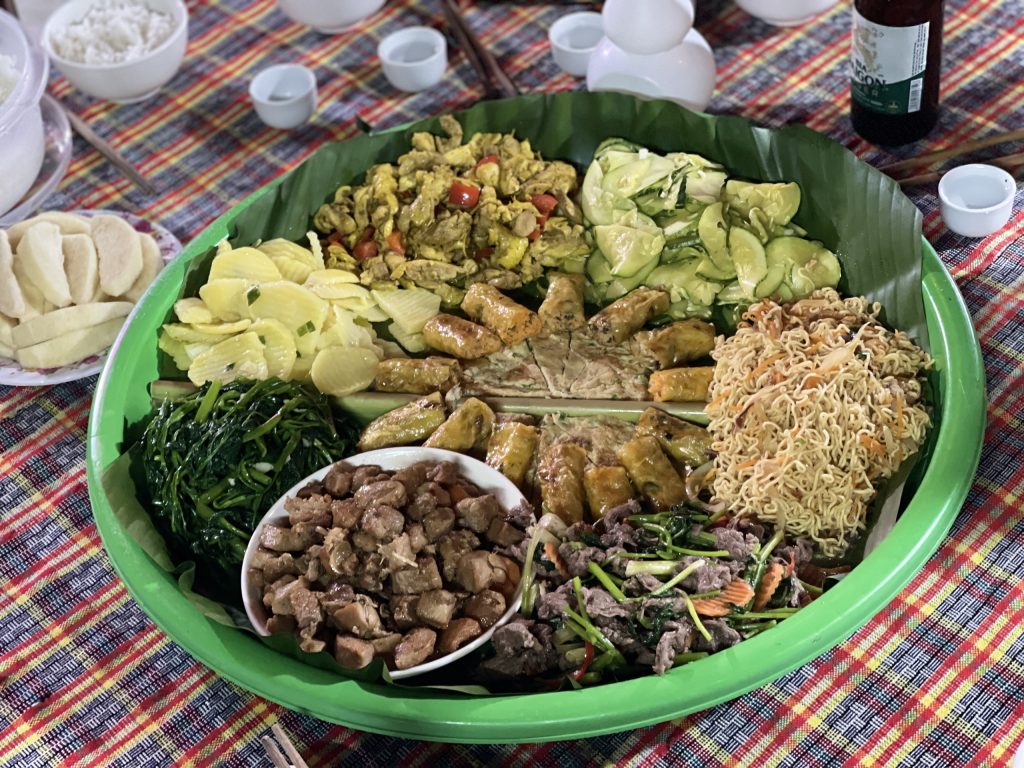“As we know, food is not just something that nature has granted us for survival; it is also cuisine—a crystallization of culture, tradition, and the character of communities, gradually taking shape over hundreds or even thousands of years in each region and among each ethnic group across the world. Our Ha Giang is a remote frontier land bordering China, with complex terrain and a harsh climate, as well as a rich diversity of ethnic minorities. These unique factors create a vivid tapestry of life here, filled with vibrancy, where the charm of local cuisine, wrapped in simplicity, cannot go unnoticed.”
“The local people here have a wide variety of foods, influenced both by the culinary culture of southern China and by the traditional dishes of each ethnic group, deeply rooted in their long-standing connection with the mountainous forests. There is also a distinction between everyday meals and those prepared for special occasions such as weddings, new rice ceremonies, village festivals, and the Lunar New Year.”
Some interesting dishes include five-color sticky rice, bamboo tube-grilled rice, and mèn mén (steamed corn flour, a staple food of the H’mong people, which is now often mixed with chicken eggs to reduce dryness). Other notable dishes are fish salad with cá bỗng (a special fish renowned for its quality in Ha Giang), various types of smoked meats and offal, Thắng Cố (a Northern Vietnamese hot pot with complex spices and meats such as horse, goat, and beef), and chicken pho made with hand-crafted rice noodles and young backyard hens. Additionally, there are mountain goat hot pot, black chicken, black pork, roast duck, sausage, and boiled stream duck served with sour rice sauce (a sauce made from fermented rice with a tangy, refreshing taste), along with steamed meat with Ngõa leaves, among others.
What sets Ha Giang’s cuisine apart is its authenticity, reflecting the genuine character of the local people. It is rare to see a chicken raised by a family for three years, served to distinguished guests or on special occasions. The chicken’s diet consists entirely of insects, worms, wild plants, garden vegetables, and corn to enhance its nutrition. There are no growth enhancers or vaccines, and this applies to other livestock and poultry as well.
Vegetables and fruits are also seasonal. The locals use natural manure and sometimes add a bit of phosphate, lime, or potassium, but no growth stimulants.
As a result, the taste of the vegetables and fruits here is incredibly sweet and fresh, likely to enchant and completely win you over.
We always share the story of sustainable travel with our partners, including homestays and local restaurants, encouraging them to remain true to themselves, preserving their genuine and pure essence, and extending their warm hospitality to friends from afar through smiles, meticulous service, and hearty meals with fresh, local, and traditional dishes. Although these dishes may not be as flashy or beautiful as those in Michelin-starred restaurants in Hanoi or Saigon, they are ‘authentic’ and serve as a heartfelt welcome and thank-you from the local people, awakening your senses of sight, taste, smell, and even your appetite.
Visit the homestays and local restaurants we recommend, and you will come to love this fascinating land even more. Best regards!”


